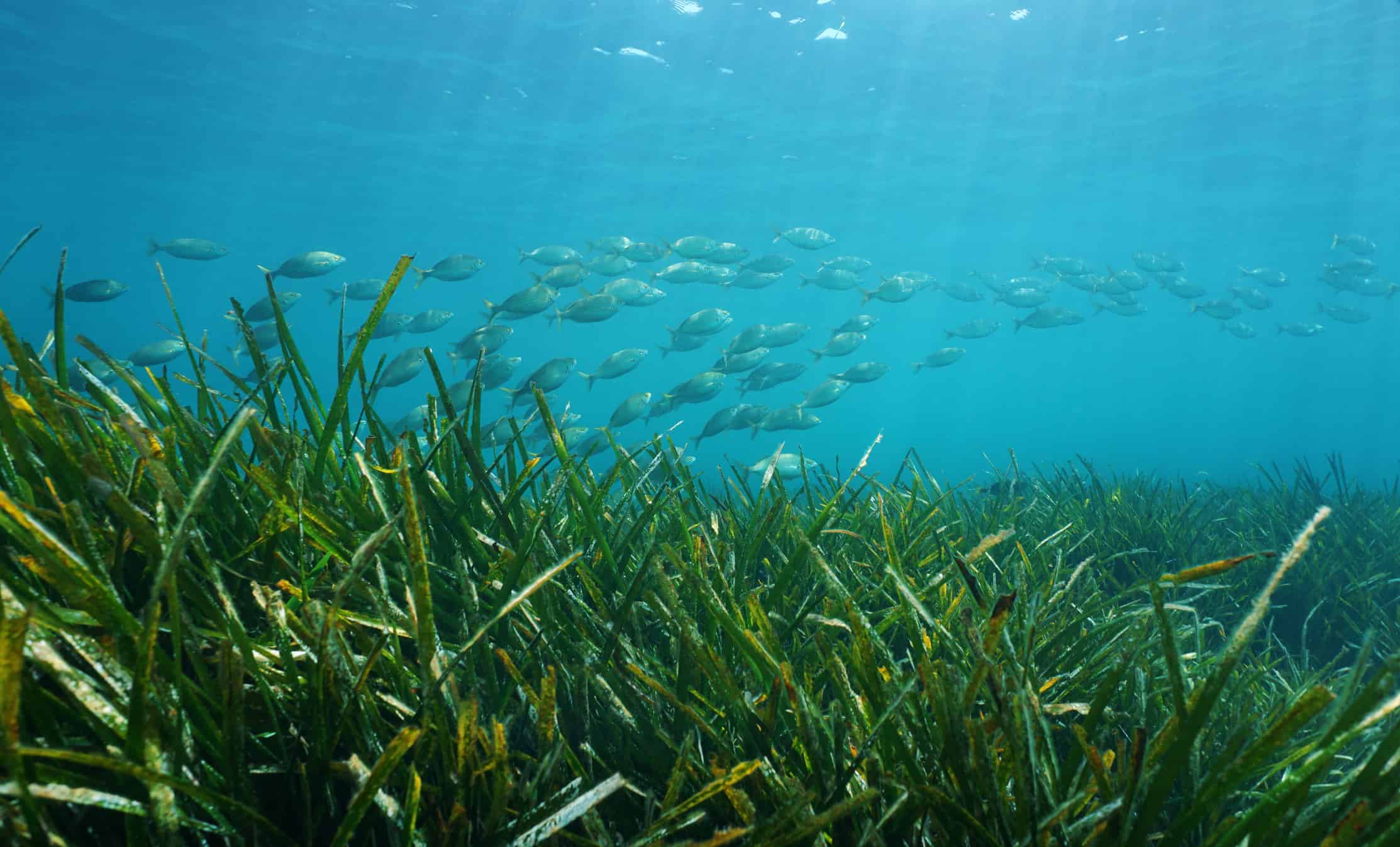The ocean holds a lot of fascinating wildlife and creatures. We’re familiar with fish, whales, dolphins, starfish, coral, and even sharks. But don’t forget that the ocean supports a large variety of plant life as well. The ocean floor is a truly amazing place for life to develop. In some places, the ocean floor is just a few feet below the surface. In others, it is almost 7 miles down and so dark that only specialized species adapted to this extreme environment can survive.
Plant life is sparse in the ocean. But algae, which often also uses photosynthesis, is plentiful. The main difference between the two is that algae do not have veins that run through them like plants do. However, algae may play a more prominent role in global environmental stability. Like plants, algae captures carbon from the atmosphere and lets off oxygen.
Both plants and algae can be an important source of food, shelter, and temperature control for other ocean life including fish, crustaceans, and even larger marine mammals such as whales and manatees. Let’s learn more about the most common plants that grow on the ocean floor and the impact they have on marine life.
1. Seaweed
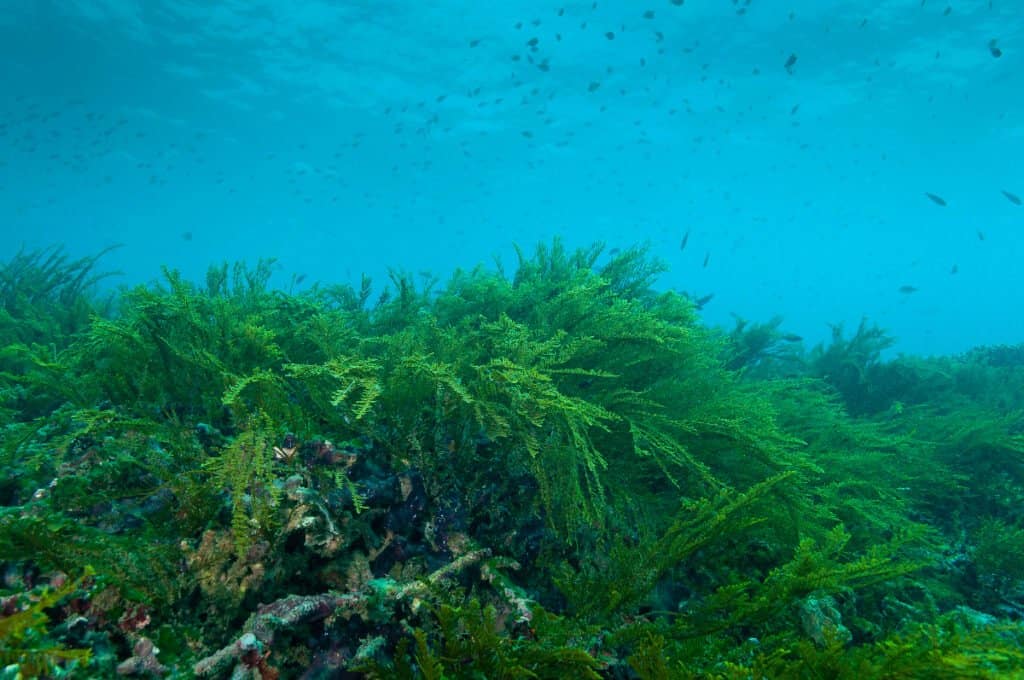
is a type of seaweed and the largest unicellular organism!
©Jesus Cobaleda/Shutterstock.com
This marine plant grows in oceans all around the world and is one of the easiest to spot and recognize. It frequently washes up on shore so even casual beachgoers have likely come across seaweed. There are thousands of species of seaweed, which is actually a collective classification for marine algae. They are larger than the single-cell algae species. Seaweed is often categorized based on its color: red, brown, green, or bluegreen. However, with so many species included, the varieties are almost endless. Some seaweed plants are long and wispy. Others look like underwater bushes. Still others produce flowers.
Some estimates say that seaweeds produce a large portion of the oxygen in the air, making this plant a vital part of the earth’s ecosystem. Seaweed is cultivated for food and in some cases, to help combat global warming. However, key populations that support other life in their native regions, such as the kelp forests in central California, can be vulnerable to invasive species or other threats.
Most seaweed needs an attachment point, often a rocky ocean floor or something similar. They tend to be more common closer to shore than in the deep ocean. There are some species that float in the water without attachment, however. Depending on the depth of the water, sometimes seaweed can be completely submerged. In other environments, seaweed will occasionally dry out. Each species has adapted to the unique environment where it lives.
2. Kelp

Many species of fish live in underwater kelp forests.
©iStock.com/Shur_ca
Kelp is actually a type of seaweed but it gets its own mention because of its importance in certain ecosystems. It is specifically a type of brown algae in the Laminariales family. Kelp isn’t actually a plant but a Stramenopile. This type of organism is a eukaryote, just like plants and animals, in that it has a nucleus. But they go through a stage in their life cycle where they use flagellum, or hair-like extensions of their cells, to get around. Like plants, kelp uses photosynthesis to turn sunlight into food. Giant kelp can grow as much as 1 to 2 feet each day. It is not unusual for giant kelp to be as long as 100 feet. Kelp has a pod that is filled with gas to help it to remain upright in the water.
The structure that holds kelp to the ocean floor is not a root but a holdfast. It does not provide the kelp with any nutrition. Instead, it just serves to tether the kelp in place. Entire forests of kelp create a massive underwater habitat for species such as sea otters, sea urchins, leopard sharks, sea lions, and countless species of fish. If you want to learn more about kelp forests and see the vital role that they play in the ecosystem, the Monterey Bay Aquarium in Monterey, California is the place to visit. Not only can you see natural kelp forest habitats in the bay but you can also get an underwater view of a multi-story kelp forest exhibit.
3. Seagrass
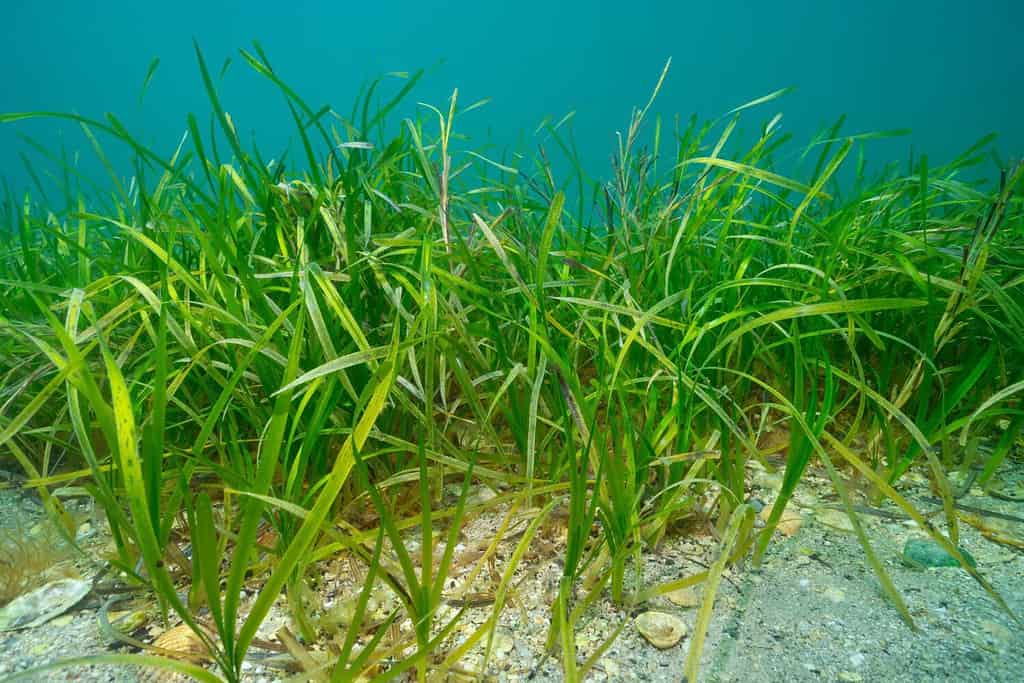
Like grass on land, seagrass needs a place to put down roots on the ocean floor.
©Damsea/Shutterstock.com
Unlike seaweed, seagrass is an actual plant that grows in the ocean. Just like grass on land, seagrass needs to have a place to root and access to sunlight. Because of this, they tend to grow in shallow, coastal areas where they can put down roots and also get sun from above the ocean. They have roots, leaves, stems, and seeds. Some even flower. Large expanses of underwater grasses are called seagrass meadows. Like kelp forests, they provide food and shelter for a variety of species. Because of their location, species like crabs, turtles, and fish are plentiful in seagrass meadows.
Some animals, such as manatees and dugongs, eat seagrass. Others eat the smaller animals that live in the seagrass meadows. Some seabirds also frequent these areas, feasting on the small invertebrates and animals that live in the seagrass. This plant is an important part of the ecosystem and the food web in its environment.
Seagrass also captures a lot of carbon from the environment. Just like other forests, these plants play a critical role in the delicate balance of the earth. They absorb carbon, which is harmful in high quantities, and put off oxygen, which we need. When this occurs in the ocean or water, it is referred to as blue carbon. Seagrass is an important part of this process.
4. Phytoplankton
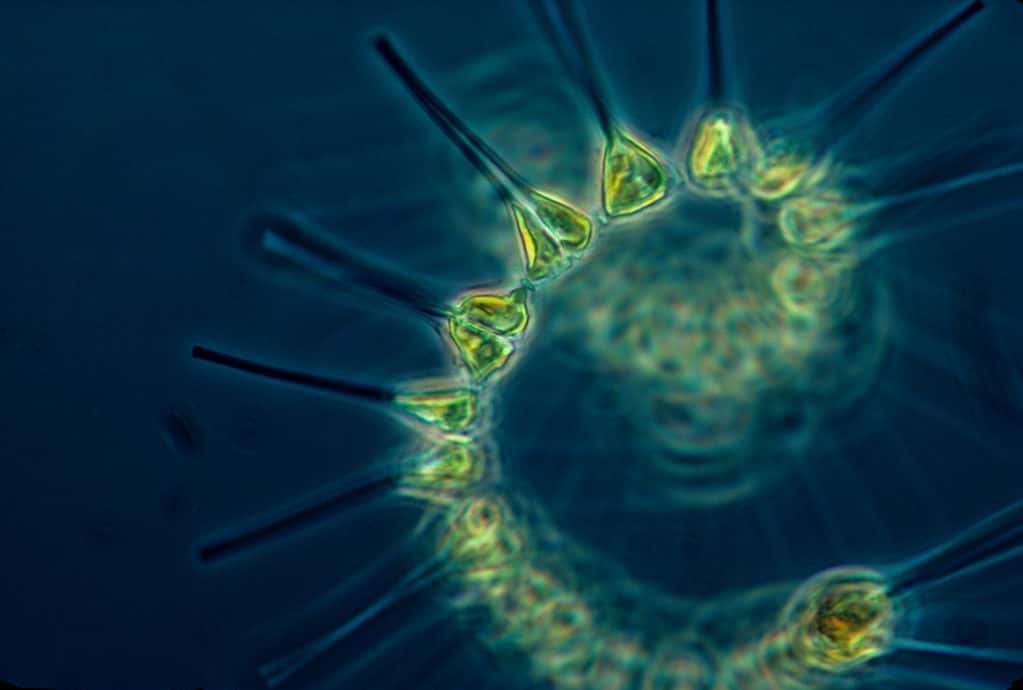
Since brine shrimp are zooplankton or plankton made of plants, they consume phytoplankton.
©Porco_Rosso/Shutterstock.com
You may not have heard this term since elementary school when you were learning about the food chain in the ocean, but these microscopic organisms are so important to the overall ocean environment. These teeny tiny organisms float in the water, absorbing sunlight which they use as their food. They are considered primary producers. This means that they produce their food by synthesizing sunlight (photosynthesis) or other chemicals (chemosynthesis) that they encounter. While they may not be much to look at on their own, these important organisms are the base of the massive ocean food web.
Phytoplankton are eaten by zooplankton and small ocean animals like some species of fish and crustaceans. These are then consumed by larger fish and ocean animals. The food web continues, with each predator taking on larger and larger prey. Baleen whales, some of the largest animals in the ocean, actually eat plankton, which they sift out of gulps of water with their baleen filters. These important organisms form the foundation of the food web in the world’s oceans. Any changes can have far-reaching impacts on the entire ocean.
5. Sea Holly
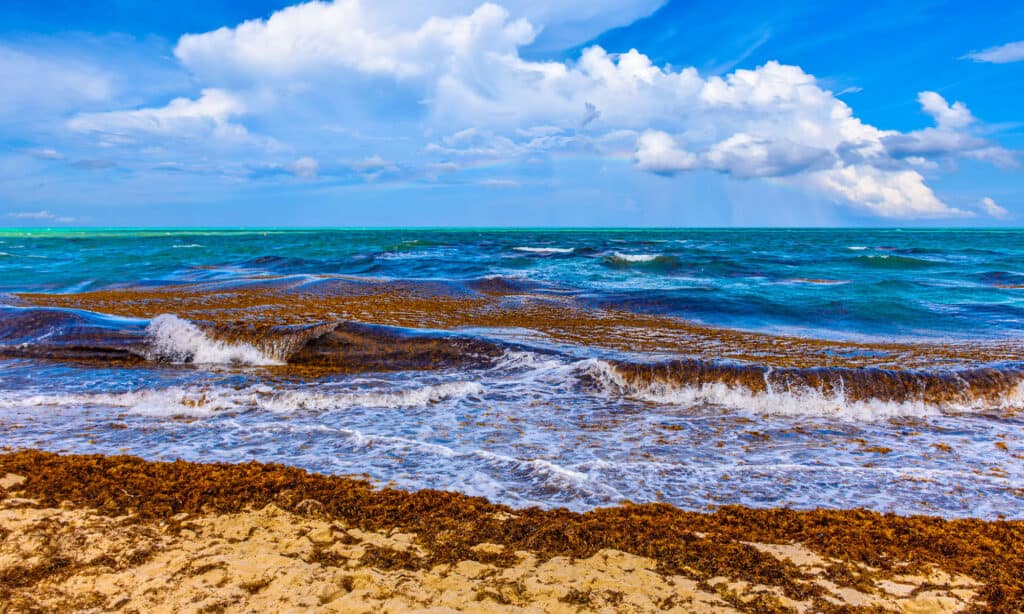
Sargassum can wash up on beaches in waves.
©iStock.com/Marcial Gonzalez
Also known as sargassum, this is actually a type of brown seaweed. It gets a special mention because of how plentiful it is as well as the impact that it has on the environment. It is often referred to as sea holly because it has many “berries” that resemble holly. However, these are actually small gas-filled pods that help the sargassum float upright in the ocean. This seaweed washes up on beaches often. If you’ve seen a brown plant-like organism (remember, seaweed is an algae, not a plant) with a lot of small, hard pods on it, chances are you’ve come across sargassum.
Many fish are born in large expanses of sargassum called rafts. Mahi mahi and amberjacks both spend their first moments in sargassum because it provides shelter and safety from potential predators as well as sources of food. Some fish, such as the sargassum fish, spend their entire lives in these forests. Sargassum tends to stay on the surface of the water.
Summary of Common Plants on the Ocean Floor
| Number | Organism | Classification |
| 1 | Seaweed | Algae |
| 2 | Kelp | Algae |
| 3 | Seagrass | Plant |
| 4 | Phytoplankton | Algae |
| 5 | Sea Holly | Algae |
Thank you for reading! Have some feedback for us? Contact the AZ Animals editorial team.

